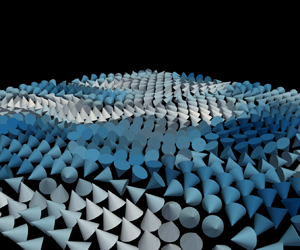Article contents
A fundamental limit on energy savings in controlled channel flow, and how to beat it
Published online by Cambridge University Press: 03 January 2023
Abstract

We derive a limit on energy savings in controlled channel flow. For flow in a channel driven by pressure, shear or any combination of the two, and controlled via wall transpiration or spanwise wall motion, the uncontrolled laminar state requires the least net energy (accounting for the energetic cost of control). Thus, the optimal control solution is to laminarize the flow. Additionally, we raise the possibility of beating this limit. By simultaneously applying wall transpiration and spanwise wall motion, we show that it may be possible to attain sustained sub-laminar energy expenditure in a controlled flow. We provide a necessary design criterion for net energy savings.
JFM classification
Information
- Type
- JFM Rapids
- Information
- Copyright
- © The Author(s), 2023. Published by Cambridge University Press
References
REFERENCES
- 8
- Cited by


